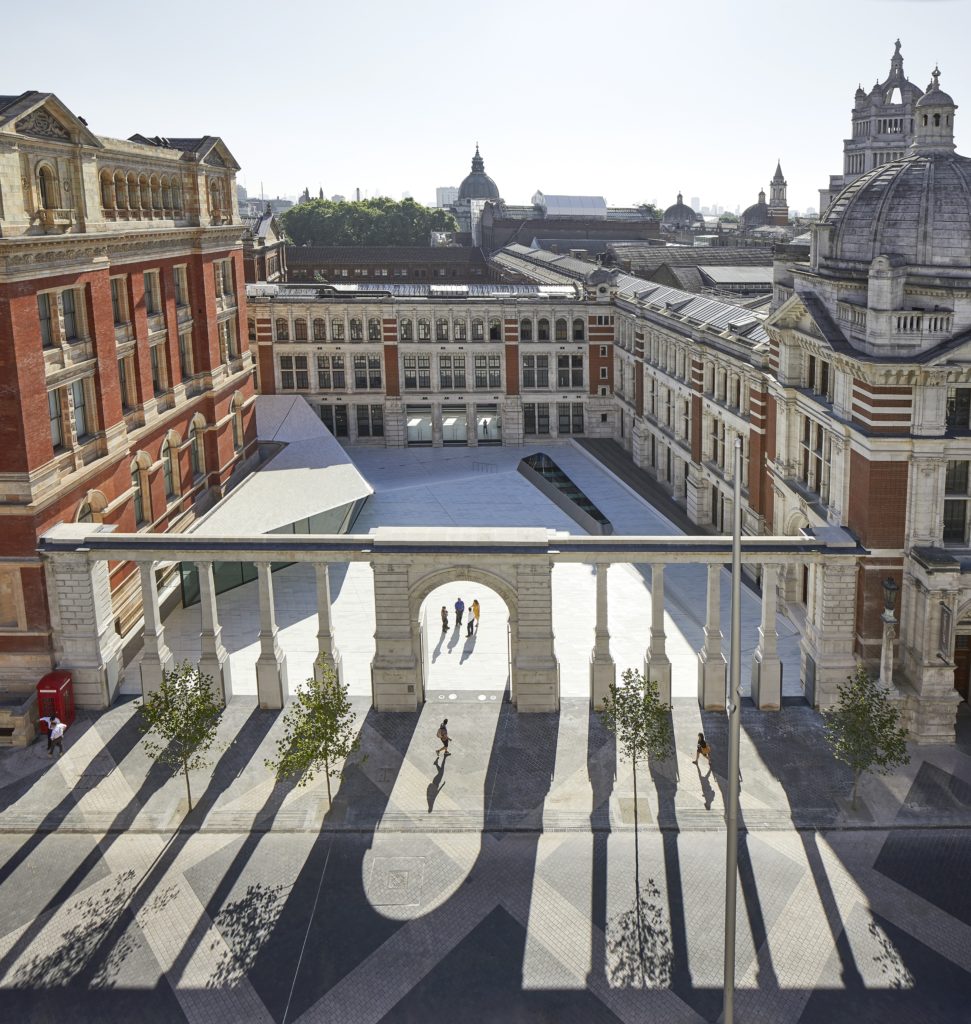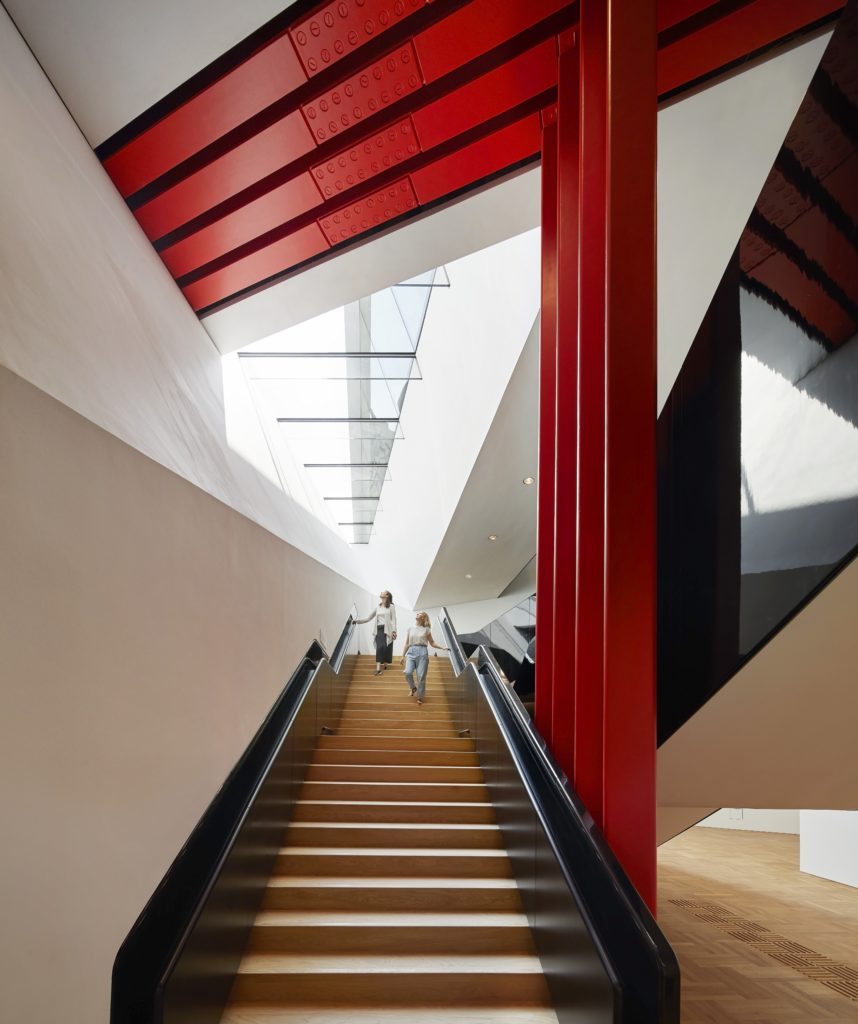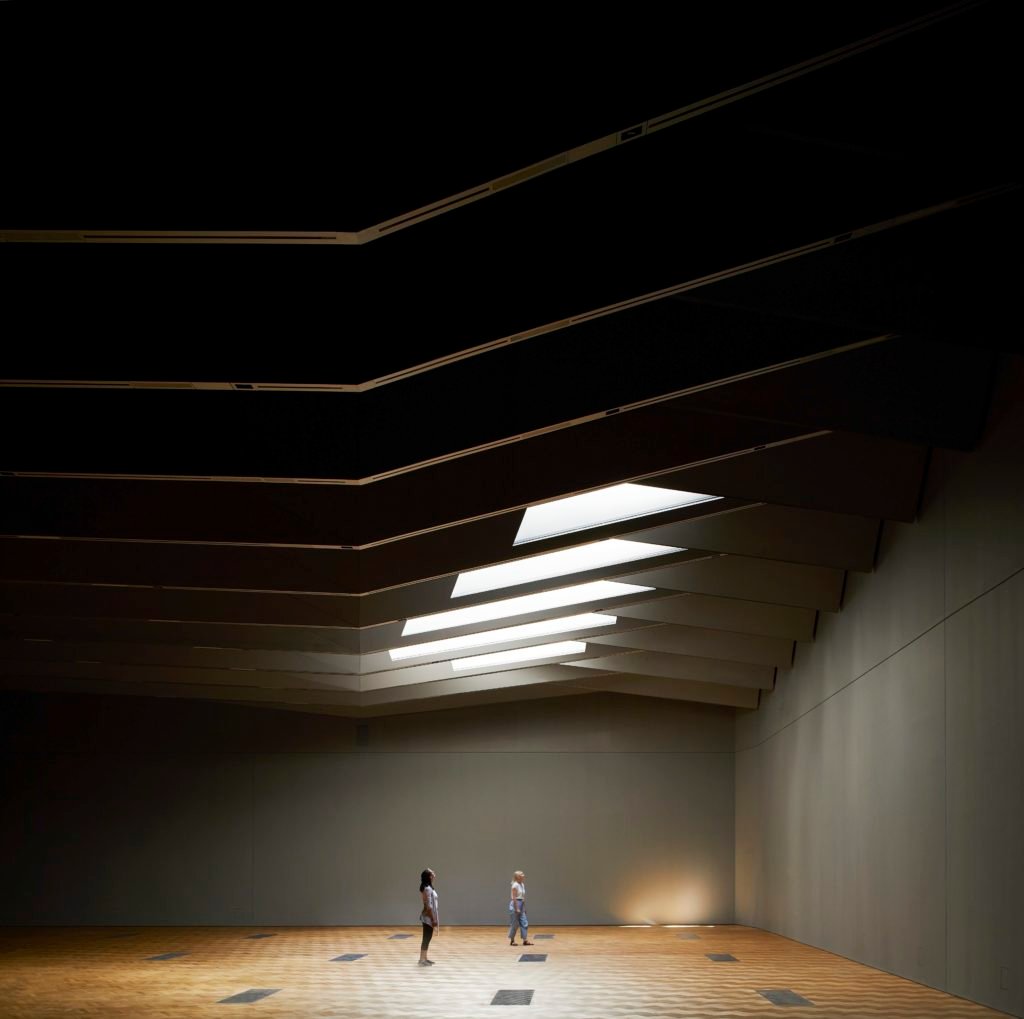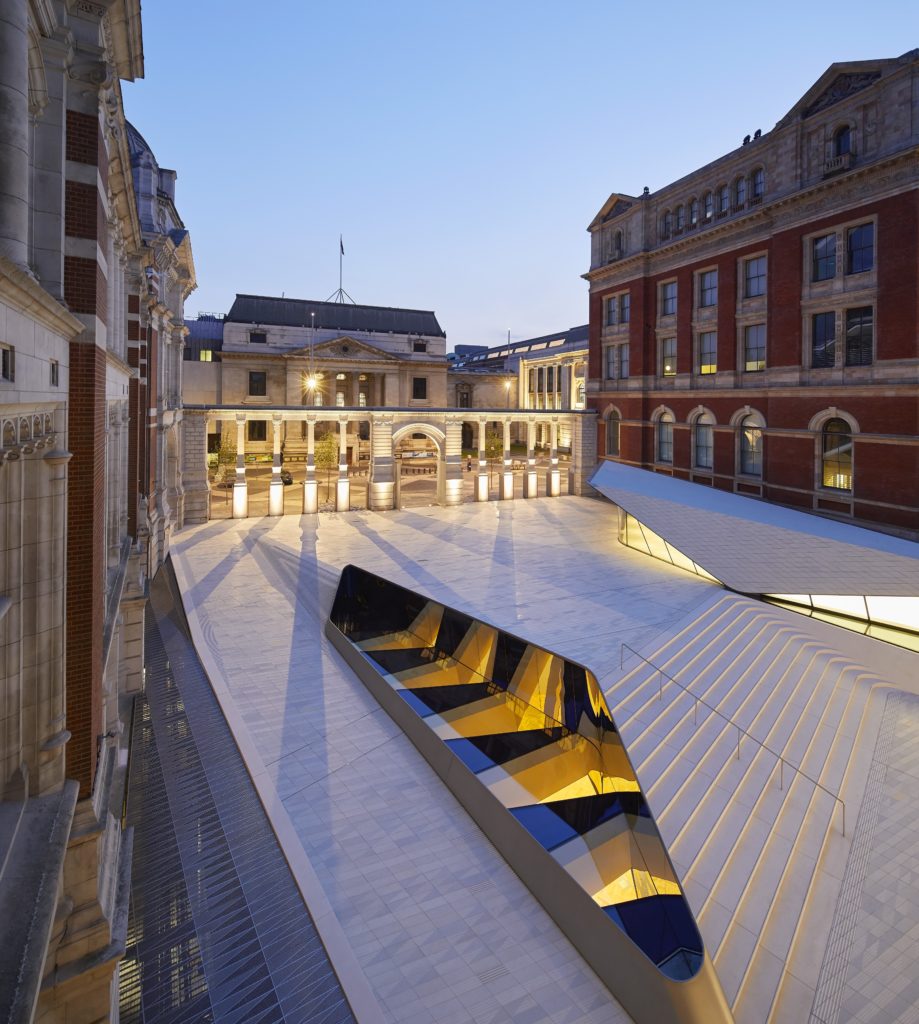On View
The V&A’s Photogenic New Extension Hopes to Lure ‘Creative Types’
Inclusivity is a sensitive issue in this London borough—Kensington and Chelsea—home to both the V&A and Grenfell Tower.

Inclusivity is a sensitive issue in this London borough—Kensington and Chelsea—home to both the V&A and Grenfell Tower.

This Friday, London’s venerable museum of design, art, architecture and engineering will throw open its perforated aluminium doors and reveal its long awaited new spaces to the public. The V&A will mark the great unveiling with a week of free celebratory events, and a street party the length of Exhibition Road on 1 July. There will be music and dancing, floating art from Tomás Saraceno, a fashion spectacular from designer Molly Goddard, and a hybrid opera from Anat Ben-David.
Its official title is the Exhibition Road Quarter, but it’s tempting to redub the V&A’s revamped back end the Millenials’ Entrance, for that, surely is the intention. It’s a zone for those who visit museums as entertainment: behind a courtyard and café, accessible straight off the street, this is where you’ll find the blockbuster shows, and light-hearted evening events. It all feels squarely aimed at offering hip young things an alternative to computer screens and coffee shops.

Descending staircase, the V&A Exhibition Road Quarter, designed by AL_A ©Hufton+Crow, courtesy Victoria and Albert Museum.
Designed by Amanda Levete and her AL_A architecture practice, the £54.5 million ($70.65 million) Exhibition Road Quarter brings the V&A a bundle of extra space in a part of London with scant wriggle room and viciously priced real estate. There’s a 1,500 sqm conservation and art handing space, a 1,200 sqm tiled entrance courtyard with a café, a 1,100 sqm column-free gallery for temporary exhibitions, a hallway, shop, sundry dramatic staircases, a loading bay, and some transportingly calm toilets.
Levete received the commission six years ago following an international competition, but the V&A’s quest for new space stretches back decades. In 1997, the museum’s then director Alan Borg commissioned The Spiral, an extrovert new extension designed by Daniel Libeskind. Memorably likened by the critic Walter Ellis to “the Guggenheim in Bilbao turned on its side and then beaten senseless with a hammer,” The Spiral was pulled in 2004.
It is significant that rather than building up, Levete’s design goes down: an anti-monumental riposte to the bombast of Libeskind’s blocky tower, and other shouty museum designs of the era. “I think in a sense the demise of the Libeskind project marked the end of the age of the building as icon and all the hubris that went with that,” says Levete. “Now there’s a new modesty, a new understanding of the place of the museum in the city. With so little space left in cities, I think this is an exemplary illustration of how you can create drama by going below ground and create open public spaces at the same time, so you get a double return for your investment.”

The Sainsbury Gallery, The V&A Exhibition Road Quarter, designed by AL_A ©Hufton+Crow, courtesy Victoria and Albert Museum.
The exhibition gallery, sponsored by the Sainsbury family, is a big, tall, blank box, with (adjustable) natural light from an oculus in the courtyard. It will remain empty, hosting music, performance, and ephemeral projects through to late September, when it will house the V&A’s major fall exhibition Opera: Passion, Power and Politics.
Custom built, and sited directly above the conservation space, one imagines it to be everything a museum might wish for, rather than the (alas, now traditional) architectural afterthought. A neat touch: the gallery is the same size as that of the V&A Museum of Design Dundee—opening in the Scottish city in 2018—allowing for easy transfer of exhibitions from one to the other.
By golly can Levete turn out a photogenic building! As with her waterfront galleries for MAAT in Lisbon, the Exhibition Road Quarter’s spaces work harder for the camera than a minor Kardashian. The stairwells are a glossy lacquered black, with improbable daylight bouncing up them from the bowels of the earth; out in the courtyard, the vista is full of echoing lines and angles; alluring curves abound: all is seductive to the eye and to the lens.
The design is not without its flaws. On a damp summer day, the pale, ridged, porcelain tiles that line the piazza looked grubby an hour into the press view: one can only imagine how they’ll fare with a couple of thousand visitors a day trampling brownie crumbs and beetroot juice into them. (Here’s hoping director Tristram Hunt has invested in some high-pressure hoses.)

The Sackler Courtyard, the V&A Exhibition Road Quarter, designed by AL_A ©Hufton+Crow, courtesy Victoria and Albert Museum.
While the porcelain-faced public courtyard is being touted as the first of its kind, lined with 11,000 handmade tiles in an evolving and irregular design, there’s no escaping the material’s associations with sanitary fixtures. This is a cold, hard, bright space, unrelieved by vegetation or other softening decorative frivolity. Maybe they’ll run banners down it; maybe they’ll do something clever with the lighting; perhaps there will be cushions on the café chairs, or baby goats brought in for morning yoga sessions. They could have all kind of things planned, but for the moment, it’s a little forbidding.
Hunt, who stepped down from a career in politics to become director of the museum in February of this year, nevertheless enthuses about the crowd he anticipates rocking up to the museum for the Friday evening opening, “I don’t think you could have a more young, dynamic, creative, and provocative audience, but clearly we have to build on that.”
It is hard not to feel that the young crowd Hunt is looking to is the new generation of creatives—those “starting out as a digital designer, an architect or a games producer,”—rather than the multitude who might still feel so grand an institution was not for them. Inclusivity is a sensitive issue in this London borough—Kensington and Chelsea—home to both the V&A and Grenfell Tower, the site of a horrific fire that has become totemic of inequality, exclusion, and neglectful oversight in the area.
Back in the 1980s, the V&A ran an advertising campaign that famously touted itself as “An ace caff with quite a nice museum attached.” Flippant it may have been, but the suggestion that audiences could be lured in to museums via their social spaces turns out to have been remarkably prescient. Some three decades later, the museum’s new Millenials’ Entrance aims to do just that.
The V&A’s Reveal Festival opens Friday 30 June